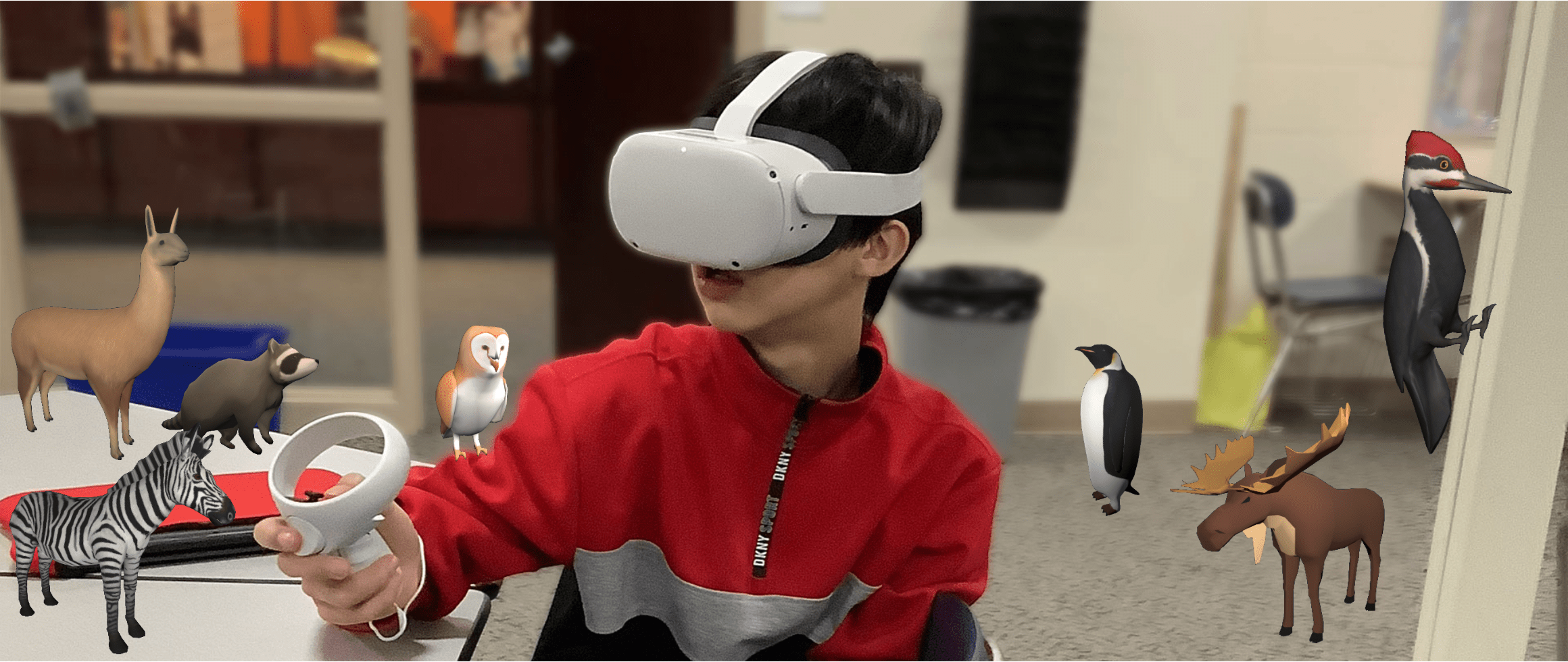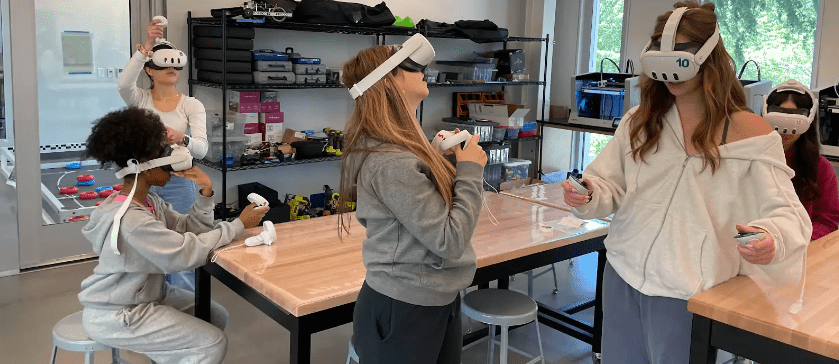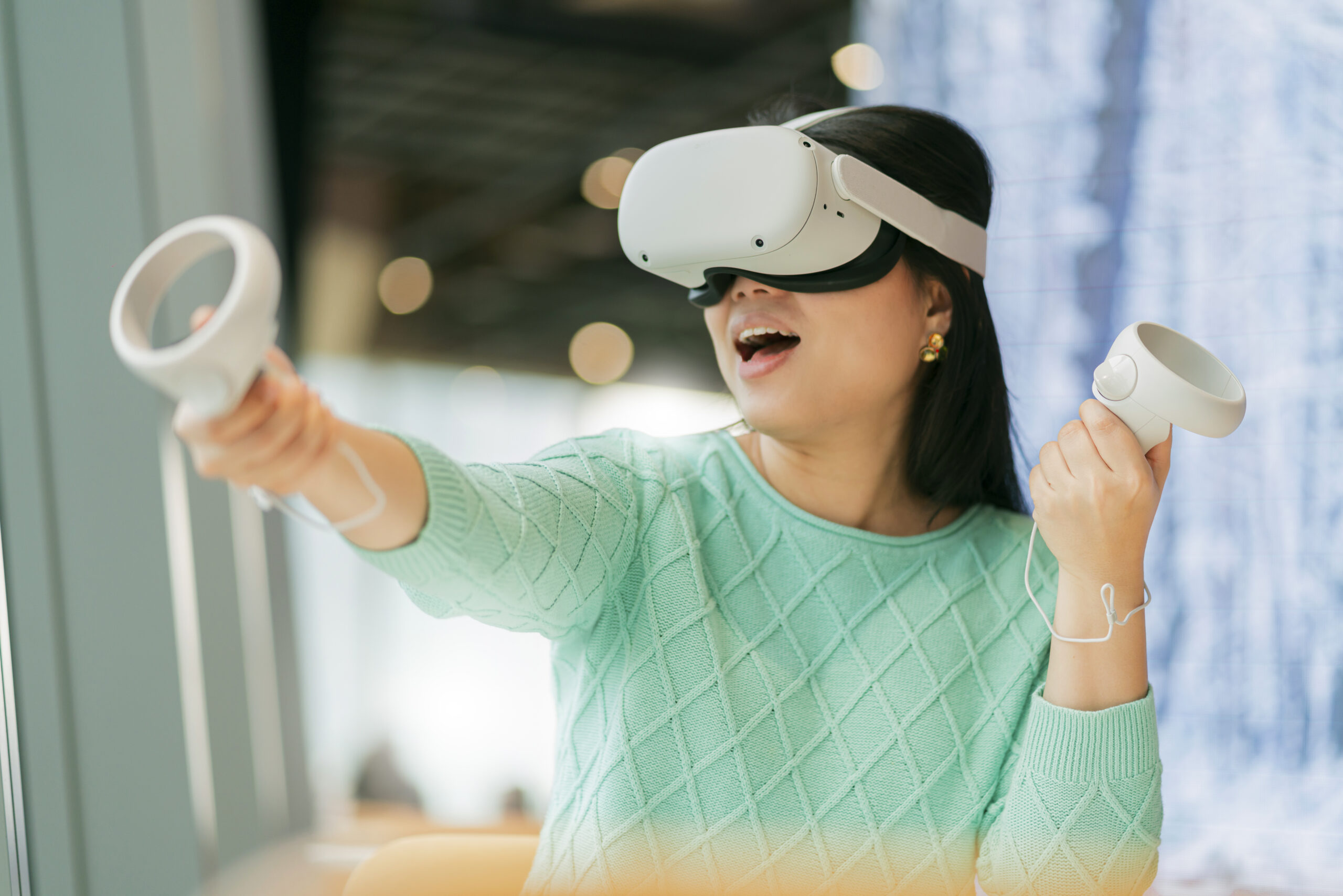
Relinquishing control is very different than losing control in classrooms. Relinquishing control in the classroom represents a seismic shift in the traditional educational model. It's a strategic choice that hands over the reins of learning to students. The goal is to build independence and self-regulation. Unlike losing control, which implies chaos and a breakdown of structure, relinquishing control is about deliberately stepping back to allow students to explore, make decisions, and direct their learning pathways. This approach moves the classroom from a teacher-led environment to a student-centered one. Now older learners are able to get themselves back into the proverbial sandbox and engage content with that same curiosity and gusto they had as kids.
Adding VR learning into this mix magnifies the potential for independent exploration because it provides a limitless digital landscape. Students explore subjects that interest them, encounter real-world scenarios, and creatively solve problems under the watchful guidance of educators who facilitate rather than dictate the learning process.

What happens when students get the chance to create with VR?
When classroom questions sound more like "How can I…? Instead of "Why do I have to…?" students show they're engaged and take ownership of their learning process. In VR environments, this shift is even more pronounced. Students who get the tools and freedom to create with virtual reality have one thing in common: they far exceed teacher expectations.
Kelly Powers, a computer science teacher in Tarrytown, couldn’t believe how realistic her student simulations were. Students created interactions far superior than her expectations. Jennifer Kempka, a math and science teacher, couldn’t believe students were actually showing up to class and building their own fantasy islands complete with emergency simulations, governments, and folklore. Justin Kosek, Dean of Students, felt the same way. Student VR projects were creative and exceeded his expectations. He suggests to educators: “Try to give up control. Be comfortable in the uncomfortable. The end result was so worth the struggle in the process. And truthfully it wasn't that big of a struggle."
How these students used VR learning to bring ideas to life
VR opens doors to new ways of seeing the world while giving shape to students' visions into tangible experiences. Student-led VR projects showcase a blend of creativity, learning, and innovation. Here are a few remarkable projects designed by students:
Virtual Fitting Room
Ian, a high school student, used VR to create a simulation that allows users to try on clothes virtually. This project exemplifies VR's innovative spirit, transforming concepts into practical applications. Ian's work demonstrates how VR can be a playground for entrepreneurial experimentation, where students creatively apply theoretical knowledge to solve real-world problems.
HistorActive
Another student initiative, HistorActive, was developed to make learning history more engaging (mainly because this student found history boring). By creating immersive VR experiences complete with accurate historical details, the project shows how VR can take words on a page and morph them into vivid, interactive scenarios. This makes learning more exciting and empowers students to explore historical contexts in a way that textbooks cannot provide.
Mental Health Awareness VR Project
In a compelling use of VR for social good, two students collaborated to create a series of VR scenes to promote mental health awareness and support. This project highlights VR's potential as a tool for social innovation, providing a safe space for users to learn about and engage with sensitive topics in a supportive virtual environment.
Students like those in Justin Kosek's classroom, who lacked the assets to make a realistic fire or a creepy dungeon, instead became resourceful, using chopsticks to represent jail bars, for example. Despite not having high-fidelity graphics or assets to create realistic environments, the students were undeterred. They saw VR as a tool for creation and experimentation. By using simple, available materials within the VR technology, they crafted experiences that were uniquely their own, proving that the power of VR in education lies not in perfect visual representation but in the engagement and problem-solving processes it sparks in students. This ingenuity isn't just making do; it's curiosity, flexibility, and experimenting to create.
How do students and teachers benefit from VR learning?
- Unparalleled Engagement
VR seizes students' attention with its immersive realms, transforming passive information absorption into an electrifying, active discovery process that continuously engages and re-engages their interest.
- Igniting Creative Thinking and Problem-Solving
VR challenges students to transcend traditional thinking patterns, empowering them to concoct novel solutions and navigate complex challenges within virtual landscapes.
- Cultivating Collaboration
VR naturally integrates cooperative elements that perpetuates and nurtures teamwork. VR worlds are collaborative, so student communication and synergistic problem-solving grows along with interpersonal skills.
- Establishing a Fearless Laboratory
For some students, the classroom is a scary place where every error or misstep threatens self-preservation. VR creates a secure, simulated testing ground where students are free to hypothesize, experiment, and iterate. It's a safe space for learning from each mistake without the intimidation of real-world stakes.

Give students the power of 'What-If' with VR learning
VR in education is far more than a novelty. Is it useful? Yes. Does it help? Absolutely.
But more than that, VR learning toes the line of learning. It shatters the systematic ways we grasp knowledge and show that we know it. And that's a really good thing.
Allowing students to experiment and take learning ownership with VR prepares them for a future where these skills are so important.
Zoe Immersive provides user-friendly VR platforms that help educators and students explore complex concepts and create thought-provoking, hands-on experiences.
Why Zoe Immersive for Schools?
- User-Friendly Technology
No prior technical knowledge or coding skills required. Our intuitive design lets educators and students quickly explore, create, and learn within VR environments.
- Customizable Learning Experiences
Differentiate content to meet the unique needs of your curriculum and student interests to make each learning experience as unique as your classroom.
- Authentic Collaborative Learning
Zoe Immersive's VR tools promote student cooperation and help build essential skills such as teamwork, communication, and problem-solving in a virtual setting.
Are you ready to see how Zoe Immersive can entice and ignite your students' enthusiasm–where they're so engaged, they're meeting and exceeding learning objectives? Explore how VR technology can be integrated into your curriculum today. Book a demo now.


